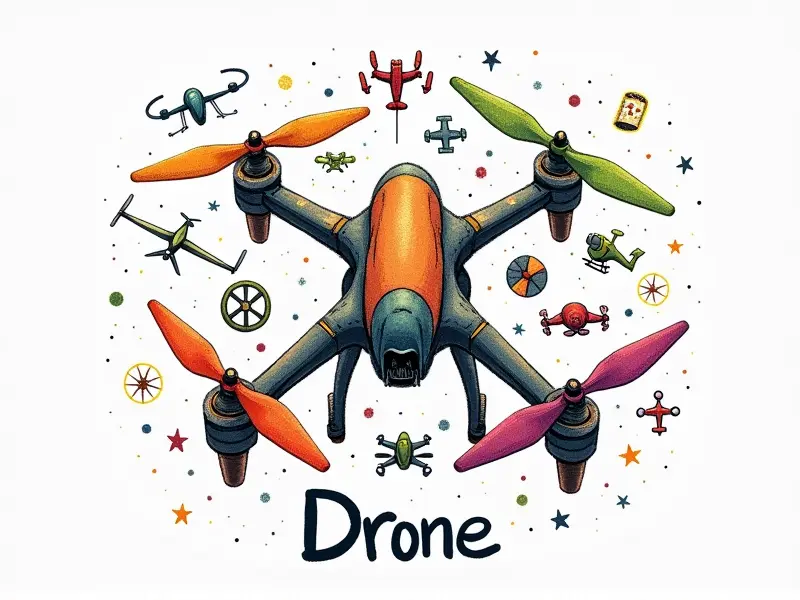What is a VTX in FPV?

In the world of First-Person View (FPV) drone racing, understanding the components that make up an effective FPV system is crucial. One such component is the Video Transmitter (VTX), which plays a pivotal role in transmitting video signals from your drone to your goggles or receiver. This article delves into what VTX means in FPV, its importance, and how to choose and set it up effectively.
Understanding VTX in FPV Racing
A Video Transmitter (VTX) is a critical piece of hardware used in FPV racing drones. It transmits the video feed from your drone's camera back to your goggles or receiver, allowing you to see what your drone sees in real-time. This technology enhances the immersive experience and performance of FPV pilots.
What Does VTX Mean in FPV?
The term "VTX" stands for Video Transmitter. In the context of FPV flying, a VTX is responsible for capturing video signals from your drone's camera and transmitting them wirelessly to your goggles or receiver. This allows you to control your drone with precision and speed.
Essential Guide to VTX for FPV Pilots
Selecting the right VTX can significantly impact your FPV experience. Here are some key factors to consider:
- Power Output: The power output of a VTX determines its range and clarity. Higher power outputs generally mean better signal strength but may require more battery capacity.
- Frequency Band: Different frequency bands (such as 5.8GHz) offer varying levels of interference, range, and legality in different regions.
- Channel Selection: The number of available channels can affect your ability to avoid signal overlap with other FPV pilots.
Choosing the Right VTX for Your FPV Setup
The selection process involves several considerations:
- Budget: High-end VTxs offer superior performance but come at a higher cost. Determine your budget and balance it with your needs.
- Purpose: Are you racing, filming, or just flying for fun? Different purposes may require different VTX features.
- Compatibility: Ensure the VTX is compatible with your drone's camera and receiver system.
Maximizing Performance with Quality VTX
To get the most out of your VTX, follow these tips:
- Tune Your Antenna: Properly tuning your antenna can enhance signal strength and range.
- Avoid Interference: Be mindful of other electronic devices that might interfere with your VTX's frequency band.
- Optimize Power Settings: Adjust power settings based on the environment and distance to optimize performance without compromising battery life.
Beginner's Guide to Setting Up VTX
Setting up a VTX for the first time can be daunting. Here’s a step-by-step guide:
- Install the VTX: Mount your VTX securely on your drone, ensuring it is properly connected to the camera and power source.
- Select Channels: Choose an appropriate channel that minimizes interference from other pilots or devices.
- Tune Antenna: Adjust the antenna for optimal signal strength and range.
The Role of VTX in FPV Systems
A VTX is integral to any FPV system. It enables real-time video transmission, which is crucial for navigation, racing, and filming. Without a reliable VTX, the entire FPV experience would be compromised.
How VTX Works in FPV Drone Tech
The process of transmitting video from your drone to your goggles involves several steps:
- Capture: The camera captures video footage.
- Encode: The VTX encodes the video signal into a format suitable for transmission.
- Transmit: The encoded signal is transmitted via radio waves to your receiver or goggles.
Why VTX Matters in FPV Flying
A high-quality VTX ensures clear, uninterrupted video feed, which is essential for safe and enjoyable flying. It enhances the overall performance of your drone by providing a reliable connection between the drone and pilot.
Basics of VTX: Essential for FPV Flying
Understanding the basics of VTX is crucial for any FPV enthusiast:
- Frequency Bands: Familiarize yourself with different frequency bands (e.g., 5.8GHz) and their characteristics.
- Power Output: Know how power output affects range and clarity.
- Channel Selection: Learn about the importance of choosing the right channel to avoid interference.
Exploring Different VTX Options for FPV
The market offers a variety of VTX options, each with its own strengths and weaknesses. Some popular choices include:
- Betaflight Compatible VTxs: These are designed to work seamlessly with the Betaflight firmware.
- High-Power VTxs: Ideal for long-range flying or racing scenarios where range is critical.
- Low-Profile VTxs: Suitable for drones that require compact and lightweight components.
Conclusion
A VTX is a fundamental component in FPV systems, providing the crucial link between your drone's camera and your goggles or receiver. By understanding its role, choosing the right model, and optimizing its performance, you can enhance your FPV experience significantly. Whether you are a beginner or an experienced pilot, investing time to learn about VTXs will pay off in clearer video feeds and better overall performance.

